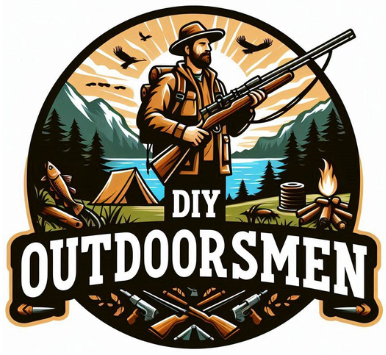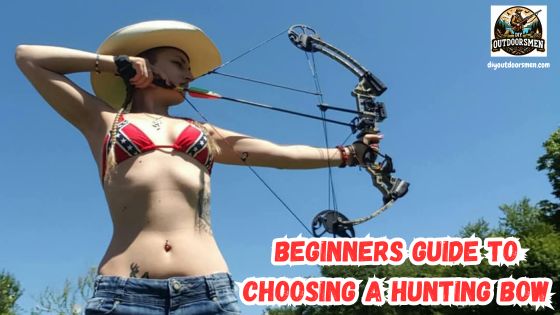Contents
- 1 1. Best Bows for Beginners – Bow Types and Finding Your Ideal Style
- 2 2. The Importance of Draw Weight for Matching Strength with Skill
- 3 3. Adjustable Bows A Flexible Choice for New Hunters
- 4 4. Accuracy Boosters for Features That Improve Your Aim
- 5 5. Material and Build for Balancing Lightweight Design with Durability
- 6 6. Ergonomics and Grip to Ensure Comfort and Control
- 7 7. Accessorizing Wisely with Essential Add-Ons for Beginners
- 8 8. Budgeting is Getting the Best Value Without Compromise
- 9 9. Learning from Experienced Hunters by Asking for Advice and Recommendations
- 10 10. Emphasizing Practice and Safety for Building Your Confidence
- 11 11. Bonus Tips and Equipment Maintenance – Extra Guidance for New Hunters
- 12 Final Thoughts
Hunting can be both a challenging and rewarding activity. Finding the best bows for beginners is a big step toward a successful and safe experience. With many options available, selecting a bow that fits your needs and skill level becomes essential.
QUICK LOOK: Tips for Choosing Hunting Bows for Beginners
- Decide on Bow Type: The first step in choosing a hunting bow is understanding the different types available. The three main categories are compound bows, recurve bows, and longbows. Each has its own design and features that cater to different hunting styles and skill levels.
- Draw Weight: When it comes to hunting, draw weight plays a significant role in both your safety and effectiveness. Draw weight refers to the force required to pull the bowstring back to a full draw.
- Consider Adjustable Bows: Adjustable bows provide flexibility by allowing you to modify key features such as draw weight and length as your abilities improve.
- Bow Sights and Rests: A quality sight enables you to judge distances more effectively, while a stabilizer helps reduce unwanted vibrations when you release an arrow. The arrow rest, responsible for holding the arrow in place until you shoot, contributes significantly to better alignment and consistency in each shot.
- Bow Materials: Many modern bows are built using advanced materials that combine strength with a lightweight design. This balance is crucial for beginners who need a bow that is both easy to handle and durable enough to sustain regular use outdoors.
- Bow Grip and Ergonomics: The way a bow fits in your hands is critical, as it influences your shooting accuracy and comfort. A bow that naturally fits your hand will allow each shot to feel balanced and controlled.
- Available Accessories: . Items such as arrow rests, stabilizers, quivers, and durable cases bring extra versatility and convenience to your outdoor adventures.
- Your Budget: Budget considerations play an important role in the selection process, so it is useful to prioritize features that deliver the most value without breaking the bank.
- Seek Advice: By connecting with local clubs, joining online communities, or seeking out reputable instructors, you can gather a wealth of expert advice that goes beyond what is found in online reviews.
- Practice and Safety: Regular practice is important for sharpening accuracy and becoming comfortable with your equipment. As a beginner, maintaining consistent practice sessions is key to reinforcing muscle memory and perfecting your shooting techniques.
Taking the time to study various models and features helps you set a strong foundation for what is ahead. Finding the ideal hunting bow is about more than just a price tag. It is about matching your physical strength, learning style, and hunting goals.
When you first get started, the process might seem overwhelming due to the variety of bow types and features available in the market. However, by focusing on the key aspects, you can narrow your choices and find a bow that feels like a natural extension of your body.
Spending extra time researching and even testing different bows can give you the confidence you need to make the best decision. This article covers ten important topics to consider when choosing your first hunting bow. These topics address the types of bows available, how to select the proper draw weight,
features that give a boost to your accuracy, and even budgeting tips. Each section is designed to give clear and practical advice so that beginners can make well-informed decisions as they step into the world of bow hunting.
Additional insights and real-life experiences have been added to provide a well-rounded perspective. The advice and tips here come from both thorough research and personal experience. I have spent many hours studying hunting equipment and discussing options with experienced hunters.
My aim is to provide an overview that is both thorough and easy to understand, regardless of your level of familiarity with bows and archery. By taking this extra time to read through the guidelines, you are better prepared to enter a field that is both challenging and immensely satisfying.
1. Best Bows for Beginners – Bow Types and Finding Your Ideal Style
The first step in choosing a hunting bow is understanding the different types available. The three main categories are compound bows, recurve bows, and longbows. Each has its own design and features that cater to different hunting styles and skill levels. Knowing the differences between them will help you decide which style suits your physical capabilities and hunting environment best.
Compound bows are popular among many beginners because their system of pulleys and cables reduces the amount of force needed to hold the bow at full draw. This design allows you to maintain accuracy more easily. Recurve bows and longbows, on the other hand, have a simpler design with a more traditional look.
They require more strength but offer a unique shooting experience that some hunters appreciate for its authenticity. It’s a good idea to check out local ranges and try handling each type before making your final decision.
Spending additional time comparing models and speaking with professionals can help you get a sense of which bow might feel most natural for your body type and shooting style. This extra step will make your picking process much smoother in the long run.
2. The Importance of Draw Weight for Matching Strength with Skill
When it comes to hunting, draw weight plays a significant role in both your safety and effectiveness. Draw weight refers to the force required to pull the bowstring back to a full draw. For beginners, it is very important to select a draw weight that matches your physical strength while allowing you to shoot accurately over various distances.
If you choose a bow with too high a draw weight, you may struggle to hold a steady aim, which can affect accuracy and lead to quick fatigue.
On the other hand, a bow with too low a draw weight might not deliver enough power to take down your target. Striking a balance between these factors is crucial, especially for those who are just starting out.
Taking the time to consult with experienced instructors and testing different draw weights at a local range can give you the confidence to select the best option for your needs.
This practical approach ensures that you build both strength and technique over time.
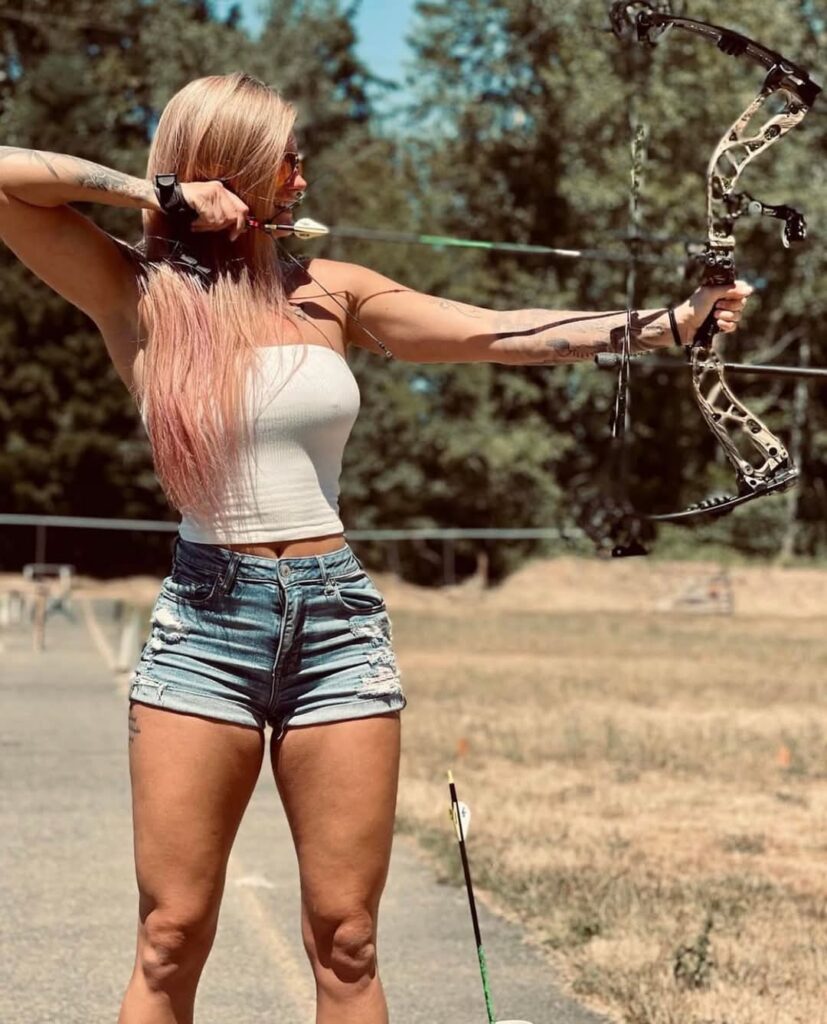
3. Adjustable Bows A Flexible Choice for New Hunters
One of the challenges for beginners is the rapid progression of strength and skill during the early stages of learning. Adjustable bows provide flexibility by allowing you to modify key features such as draw weight and length as your abilities improve. This adaptability can be a very attractive benefit, offering long-term value as your skills mature.
These bows often come with settings that can be easily changed without the need for specialized tools. For new hunters, this means less worry about outgrowing your equipment and more time focusing on refining your technique and enjoying the experience. It is also beneficial to know that adjustments can be made as you grow more confident in your shooting methods.
Many beginners find that an adjustable bow not only makes the transition from novice to proficient marks smoother but also helps in experimenting with different shooting styles without investing in a completely new setup.
4. Accuracy Boosters for Features That Improve Your Aim
Accuracy is paramount in hunting, and the design of your bow plays a significant role in how well you hit your target. Components such as sights, stabilizers, and arrow rests are essential for achieving consistent precision. Even small improvements can have a big impact on your shooting performance.
A quality sight enables you to judge distances more effectively, while a stabilizer helps reduce unwanted vibrations when you release an arrow. The arrow rest, responsible for holding the arrow in place until you shoot, contributes significantly to better alignment and consistency in each shot. Exploring accessories that boost these features can be a key part of improving your overall accuracy.
In addition, practicing with these features over time will allow you to magnify your natural talent and build muscle memory, ensuring that every shot is guided by improved precision.
5. Material and Build for Balancing Lightweight Design with Durability
The construction and materials of a hunting bow are essential factors to consider when making a purchase. Many modern bows are built using advanced materials that combine strength with a lightweight design. This balance is crucial for beginners who need a bow that is both easy to handle and durable enough to sustain regular use outdoors.
A bow that is too heavy can hinder your ability to shoot accurately over extended periods, while one that is too light might lack the resilience required for rugged conditions. By choosing a bow crafted from well-tested materials, you secure a dependable tool that not only meets your performance needs but also stands up to the challenges of various hunting scenarios.
Reading reviews and seeking recommendations from seasoned hunters can further help you identify bows that offer the best combination of durability and performance.
6. Ergonomics and Grip to Ensure Comfort and Control
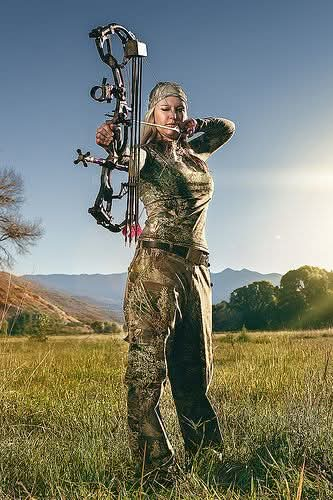
A frequently overlooked aspect by beginners is the ergonomics of the bow, including the grip and overall design. The way a bow fits in your hands is critical, as it influences your shooting accuracy and comfort. A bow that naturally fits your hand will allow each shot to feel balanced and controlled.
If the bow feels awkward or induces discomfort after long sessions, it may interfere with maintaining a consistent aim. It is advisable to try out different models to see which design suits your natural hand positioning and grip style best. Many experts recommend spending extra time at a range to get hands-on experience before making a purchase.
Paying attention to ergonomic details ensures that you can focus on refining your shooting form without distractions caused by discomfort, which ultimately leads to improved performance over time.
7. Accessorizing Wisely with Essential Add-Ons for Beginners
While the bow itself is central to your setup, accessories play a supportive role in rounding out your hunting experience. Items such as arrow rests, stabilizers, quivers, and durable cases bring extra versatility and convenience to your outdoor adventures. Starting with a complete kit can provide beginners with the added confidence they need in the field.
Many accessories are designed to be compatible with a wide range of bows. Investing in a few key add-ons not only improves accuracy and safety but also ensures that you have the necessary tools to adapt to different hunting situations. Quality accessories often come with reliable performance records, giving you peace of mind during your expeditions.
In addition, learning about the maintenance and proper use of these accessories can further boost your overall hunting experience, making each outing both safer and more enjoyable.
8. Budgeting is Getting the Best Value Without Compromise
Many new hunters are concerned about overspending on their first bow. Budget considerations play an important role in the selection process, so it is useful to prioritize features that deliver the most value without breaking the bank. Quality hunting bows span a wide range of prices, allowing you to find an option that fits your financial plan while still offering reliable performance.
It is rarely necessary to invest a large sum on your first bow. Concentrating on essential features and leaving room for gradual upgrades can keep your initial expense manageable. A thorough research process that compares reviews, specifications, and package deals can help you secure the best value for your money.
Paying careful attention to your budget while still ensuring that your equipment meets basic performance needs sets you up for long-term success without unnecessary financial strain.
9. Learning from Experienced Hunters by Asking for Advice and Recommendations
The knowledge shared by experienced hunters is one of the most valuable resources for beginners. Practical insights provided by those who have honed their skills over many seasons can be extremely beneficial when trying to decide on the ideal bow. By connecting with local clubs, joining online communities, or seeking out reputable instructors, you can gather a wealth of expert advice that goes beyond what is found in online reviews.
Many seasoned hunters offer recommendations on which models perform best in various conditions. They often share tips about bow maintenance, proper adjustments, and techniques for ensuring longevity and reliability. Taking time to ask detailed questions and engage in these discussions can give you a competitive edge in your own hunting adventure.
This kind of practical, peer-based advice not only builds confidence but also creates connections that can prove invaluable as you progress from a novice to a proficient hunter.
10. Emphasizing Practice and Safety for Building Your Confidence
The best hunting bow is only as effective as the skill of its user. Regular practice is important for sharpening accuracy and becoming comfortable with your equipment. As a beginner, maintaining consistent practice sessions is key to reinforcing muscle memory and perfecting your shooting techniques. This persistence makes every hunting trip safer and more enjoyable.
Safety should always be very important. Once you develop confidence in your shooting, you can focus on refining your form and gradually learning more advanced techniques. Many beginners find that taking lessons or joining a local shooting group speeds up their progress, thanks to immediate feedback and guidance.
Setting aside dedicated time for practice not only improves your shooting form but also instills a mindset of discipline and caution that is essential when handling powerful equipment outdoors.
11. Bonus Tips and Equipment Maintenance – Extra Guidance for New Hunters
Beyond choosing the right bow and accessories, it is really important to pay attention to equipment maintenance and a few bonus tips that can give your overall hunting experience a serious boost. Regular maintenance of your bow is easy once you have developed a routine.
Clean your bowstring, check for any signs of wear and tear, and ensure that every component is functioning as it should. This not only prolongs the life of your equipment but also prevents potential mishaps in the field.
Additionally, here are some extra practical tips for beginners: Start by organizing your gear so that everything is easy to access, both at home and when you are outdoors. Keep a logbook of your practice sessions and any adjustments you make to your bow; this record can become a valuable reference as your skills improve over time.
Moreover, consider finding a mentor who can provide real-time feedback and let it rip in sharing essential insider knowledge about local hunting spots and seasonal tips. Another useful piece of advice is to invest time in learning about the local terrain and weather conditions.
Understanding how these external factors affect arrow flight and bow performance can make a big difference during hunting trips. Don’t be afraid to ask questions or join community workshops where experienced hunters share their tricks and techniques.
This section is designed to round out your understanding of bow hunting by addressing the often-overlooked details that can make your adventures safer and more enjoyable. By combining careful equipment upkeep with a proactive approach to learning and community engagement, you set yourself up for a rewarding and long-lasting experience in the world of bow hunting.
Final Thoughts
Choosing the right hunting bow is an exciting part of starting your adventure as a hunter. Each element, from bow type and draw weight to ergonomics and accessories, plays a major role in shaping your experience in the field.
I have shared practical advice, step-by-step guidelines, and recommendations based on a mix of research and personal experience. My goal is to provide beginners with clear guidelines so you can make informed decisions without feeling overwhelmed.
As you put together your equipment, remember that the right bow is one that matches your physical abilities, grows with your skills, and suits your hunting style. With patience, consistent practice, and cautious budgeting, you can successfully navigate your entry into bow hunting and enjoy numerous rewarding experiences along the way.
The adventure from being a novice to becoming a skilled hunter is filled with valuable learning opportunities. I encourage you to try different models, gather advice from experienced peers, and remain open to making adjustments as you progress. Every step you take helps you become more attuned to the nuances of your craft and lays the foundation for a fulfilling hunting career.
Check Out Our Latest Articles:
- Bow Hunting For Mule Deer

- Best Public Land Mule Deer Hunting

- Drone-Based Scouting Services For Mule Deer

- Late Season Mule Deer Hunting Tips

- 8 Tips for Dealing with Hunting Pressure While Mule Deer Hunting
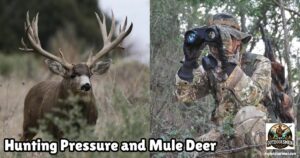
- TideWe Portable Hunting Blinds

As always, stay safe, enjoy the journey and please try to leave it cleaner than you found it. If you have any comments, questions, ideas, or suggestions please leave them in the comment section below and I’ll get back to you ASAP. You can follow us on YouTube: Man Art Creations for videos of our DIY Adventures.
P.S. – Thanks so much for checking out our blog we really appreciate it. Just so you know, we may receive a commission if you click on some of the links that appear on our site. This helps us keep our content free and up-to-date for everyone. We appreciate your support!
